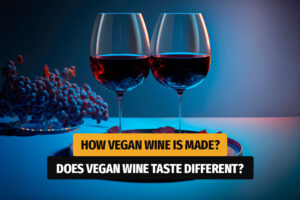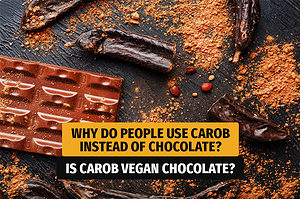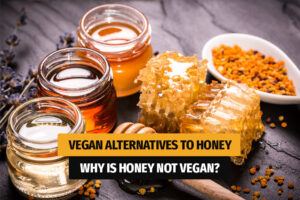
Tofu is a popular food item consumed by millions of people around the world. Tofu, also known as bean curd, has been a staple in traditional Asian cuisine for ages, and in recent years, it has also gained popularity in Western countries. It can be used in many different dishes, including stir-fries, soups, salads, and more; with many different flavors, it can also be eaten as a snack or dessert.
However, there is some debate over whether this great vegan protein source is truly plant-based. In this article, we will explore the tofu dilemma and try to answer the question: is tofu plant-based?
What Plant Does Tofu Come From?
But first things first. Have you ever wondered about the origins of this versatile, protein-packed superstar that has taken the culinary world by storm? Let me introduce you to its humble roots: the mighty soybean. Tofu is crafted from the unassuming yet powerful soybean, a legume nourishing people for thousands of years.
Now, you might ask, how does one transform this little bean into the smooth, delectable treat we know as tofu? The secret lies in a process that only true connoisseurs would appreciate. Soybeans are soaked, boiled, and ground to create a rich, milky liquid called soy milk. This soy milk is then curdled using a coagulant like nigari or calcium sulfate, which separates the milk into curds and whey. Finally, the curds are pressed into those lovely blocks of tofu we enjoy today.

The Process of Making Tofu
The process of making tofu is a fascinating journey that transforms soybeans into the versatile, protein-rich food we know and love. Here is a step-by-step description of the tofu-making process:
- Soaking the soybeans: The process begins with dry soybeans soaked in water for several hours or overnight. This allows the soybeans to absorb water, expand, and soften, making them easier to process.
- Grinding and cooking the soybeans: Once they have been soaked and softened, they are ground into a paste, often with the help of water. This paste is then cooked, typically by boiling, which helps to break down the proteins and release the natural oils in the beans.
- Separating the soy milk: After the soybean paste has been cooked, it is strained to separate the liquid, soy milk, from the solid soybean pulp, or okara. The okara can be used in various recipes or as a high-fiber animal feed.
- Coagulation process: The next step is to coagulate the soy milk, which involves adding a coagulant to the liquid. This causes the proteins in the soy milk to solidify and form curds. Common coagulants used in tofu production include nigari (magnesium chloride), derived from seawater, and calcium sulfate (gypsum), a naturally occurring mineral.
- Separating the curds and whey: Once the coagulant has been added, the soy milk will separate into curds and whey. The curds are the solid protein-rich portions that will become tofu, while the whey is the liquid byproduct of the process. The whey can be discarded or repurposed for other uses, such as in plant fertilizers or as a base for some food products.
- Pressing the curds: The curds are then transferred to a mold, usually lined with cheesecloth, which allows the whey to drain while keeping the curds in place. A weight or press is applied to the mold, further pressing the curds to remove excess whey and create a dense, uniform texture. The pressing duration and pressure will determine the firmness of the final tofu product.
- Removing the tofu from the mold: After pressing, the tofu is removed, and the cheesecloth is gently peeled away. The tofu is now ready to be used in various recipes, taking on the flavors and textures of the dish it is incorporated into.
- Storing the tofu: Tofu can be stored in water in the refrigerator to maintain its freshness. However, it is recommended to change the water daily to prevent spoilage. Tofu can also be frozen for longer storage, though this may alter its texture.
From the humble soybean to the delicious and versatile tofu, this intricate process showcases the remarkable transformation of a simple legume into a culinary favorite many worldwide enjoy.

Is Tofu Plant-based?
The answer to this question is more complex than one might think. At first glance, tofu appears to be a plant-based food. After all, it is made from soy, which is a plant!
The process of creating tofu involves the use of coagulants, which are substances that cause soy milk to solidify and form curds. These coagulants can be derived from both plant and animal sources.
Is All Tofu Plant-based?
While tofu itself is plant-based, certain coagulants used in the tofu-making process may not be vegan-friendly. Although it’s not common, some traditional methods might employ non-vegan coagulants, which could create a conflict for those adhering to strict vegan diets.
A popular vegan-friendly coagulant is nigari, a natural byproduct of seawater that primarily consists of magnesium chloride. Another common vegan option is calcium sulfate, also known as gypsum, which is derived from minerals.
However, in some cases, tofu manufacturers might use coagulants like gelatin, which is derived from animal collagen. This would render the final product non-vegan. To avoid such issues, vegans need to check the ingredient list on tofu packages and opt for brands that explicitly state they use vegan coagulants. Many tofu manufacturers have recognized this concern and ensure their products cater to the growing vegan market using only plant-based coagulants.
So, while tofu is inherently plant-based, verifying the coagulants used in its production is crucial to ensure it aligns with vegan principles.
Can You Eat Tofu on a Whole Food Plant-based Diet?
The whole food plant-based diet (WFPB) is a lifestyle known for its health-promoting benefits and sustainability. Now, can tofu find its way into this wholesome way of eating? The answer is yes – but with a few considerations!
First, let’s dive into the essence of a WFPB diet. It emphasizes whole, minimally processed plant foods such as fruits, vegetables, whole grains, legumes, nuts, and seeds. The aim is to consume foods in their most natural state while avoiding highly processed or refined ingredients.
So, where does tofu fit into this picture? Though derived from the soybean, tofu does undergo a level of processing. However, it is still considered a relatively unprocessed food, retaining much of its original nutrients, like high-quality protein, essential amino acids, and isoflavones. For this reason, tofu is generally accepted as part of a WFPB diet.
Now, let’s get into the nitty-gritty. When it comes to including tofu in a WFPB diet, the key is moderation. Why? Because while tofu is nutrient-dense, it’s also a more concentrated source of calories and protein than whole soybeans or tempeh, a fermented soybean product. Thus, tofu should be consumed with a diverse array of whole-plant foods, ensuring you receive a broad spectrum of nutrients.

Another critical aspect to consider is the quality of the tofu you consume. Opt for organic, non-GMO tofu, as these choices have higher nutrient profiles and are produced without genetically modified soybeans or harmful pesticides. Isn’t it comforting to know you’re making the best possible choice for your body and the environment?
In conclusion, tofu can be enjoyed as part of a WFPB diet when consumed mindfully and in moderation. Remember to choose high-quality, organic tofu and pair it with a colorful array of other whole plant foods to create a well-rounded, nutrient-rich meal.
Conclusion
In the end, the journey of tofu, from its modest soybean beginnings to the plant-based protein powerhouse we know today, has proven its undeniable status as a plant-based food.
By making informed choices about the tofu we consume and how we incorporate it into our diets, we can enjoy the myriad of culinary possibilities it offers while still reaping the health benefits of plant-based eating.
So, let’s celebrate tofu as the plant-based marvel it is, and continue to explore its endless, delicious possibilities!








